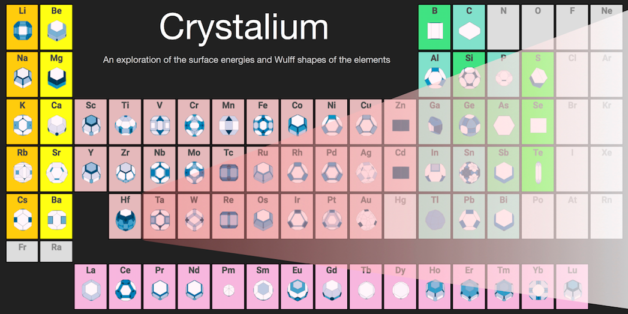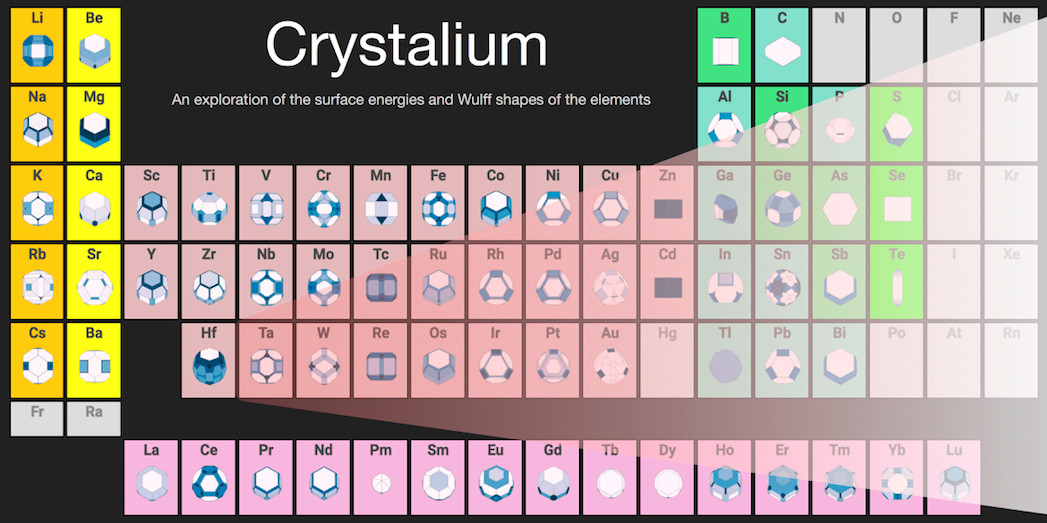 Nanoengineers at the University of California San Diego, in collaboration with the Materials Project at Lawrence Berkeley National Laboratory (Berkeley Lab), have created the world’s largest database of elemental crystal surfaces and shapes to date. Dubbed Crystalium, this new open-source database can help researchers design new materials for technologies in which surfaces and interfaces play an important role, such as fuel cells, catalytic converters in cars, computer microchips, nanomaterials and solid-state batteries.
Nanoengineers at the University of California San Diego, in collaboration with the Materials Project at Lawrence Berkeley National Laboratory (Berkeley Lab), have created the world’s largest database of elemental crystal surfaces and shapes to date. Dubbed Crystalium, this new open-source database can help researchers design new materials for technologies in which surfaces and interfaces play an important role, such as fuel cells, catalytic converters in cars, computer microchips, nanomaterials and solid-state batteries.
“This work is an important starting point for studying the material surfaces and interfaces, where many novel properties can be found. We’ve developed a new resource that can be used to better understand surface science and find better materials for surface-driven technologies,” said Shyue Ping Ong, a nanoengineering professor at UC San Diego and senior author of the study.
For example, fuel cell performance is partly influenced by the reaction of molecules such as hydrogen and oxygen on the surfaces of metal catalysts. Also, interfaces between the electrodes and electrolyte in a rechargeable lithium-ion battery host a variety of chemical reactions that can limit the battery’s performance. The work in this study is useful for these applications, said Ong, who is also part of a larger effort by the UC San Diego Sustainable Power and Energy Center to design better battery materials.
“Researchers can use this database to figure out which elements or materials are more likely to be viable catalysts for processes like ammonia production or making hydrogen gas from water,” said Richard Tran, a nanoengineering PhD student in Ong’s Materials Virtual Lab and the study’s first author. Tran did this work while he was an undergraduate at UC San Diego.
The work, published Sept. 13 in the journal Scientific Data, provides the surface energies and equilibrium crystal shapes of more than 100 polymorphs of 72 elements in the periodic table. Surface energy describes the stability of a surface; it is a measure of the excess energy of atoms on the surface relative to those in the bulk material. Knowing surface energies is useful for designing materials that perform their functions primarily on their surfaces, like catalysts and nanoparticles.
Co-authors include Donald Winston and Kristin A. Persson of Berkeley Lab.
Read the full release at the UC San Diego Jacobs School of Engineering website.
